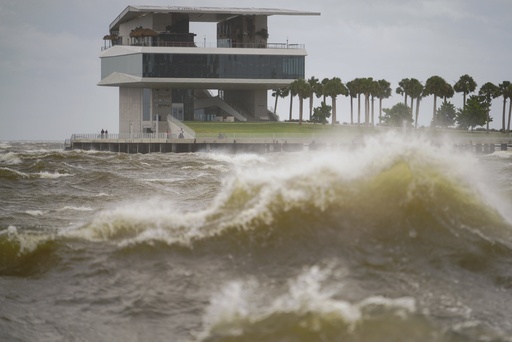Millions across the southeastern United States are still coping with the extensive destruction brought on by Hurricanes Helene and Milton. However, experts caution that the Atlantic hurricane season continues to pose risks.
Jeff Masters, a meteorologist with Yale Climate Connections, reported, “Hurricane landfalls in the U.S. have been extremely active this year.” To date, five hurricanes have hit the U.S., with the record for the highest number of landfalls set at six.
Masters noted that the current trajectory might see this record equaled, as tropical cyclone activity is anticipated to be above average for the remainder of October and November.
The official end of hurricane season is November 30; typically, the most intense activity occurs from mid-August to mid-October, attributed to warmer ocean temperatures. Masters explained that this hyperactive period is likely to extend into November due to conducive upper-level atmospheric winds and ocean temperatures that remain unusually high.
“I predict there may be two or three more named storms by the first week of November, and at least one of those should develop into a hurricane,” Masters added.
Chris Horvat, an assistant professor at Brown University specializing in earth and planetary sciences, pointed out, “The Gulf of Mexico is still significantly warm for this time of year, indicating that we shouldn’t let our guard down.”
Hurricanes are fueled by ocean waters that reach temperatures of 80 degrees Fahrenheit (26.6 degrees Celsius) or above, but they also require certain atmospheric conditions, such as favorable upper-level winds, which can limit their formation.
“The Caribbean has sufficiently warm waters year-round to support hurricanes; however, it’s the strong upper-level winds that hinder formation during the winter months,” Masters explained.
It’s vital to remain vigilant as the hurricane season approaches its conclusion. “The impact of climate change is resulting in warmer oceans, which is likely to bring about more intense hurricanes as well as their occurrence later in the season,” he suggested.
This emphasis on preparedness highlights the ongoing need for individuals and communities to remain alert as the season progresses.


